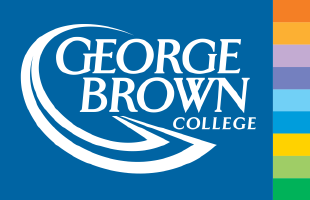The Difference Between Class A, B, AB and C Amplifiers
Used in audio equipment, radio, TV, and computers amplifiers are components that increase or amplify the voltage, current or power of an electrical signal. Almost all electronic circuits and systems use at least one stage of amplification. As engineers and technicians, we should be able to identify different classes of amplifiers.
In this blog, we will discuss the differences between the four classes of amplifiers: Class A, B, AB, and C. These are the more common types of amplifiers for linear designs.
Class A Amplifier
This class of amplifier provides very good signal reproduction. One of the primary reasons for this is that the Q-point (or operating point) is halfway between cut-off and saturation. This means it is biased midway through its active region providing a full 360 degrees of amplification despite its characteristic 180-degree inversion of the output signal. While beneficial to signal fidelity, this midway biased Q-point feature is the cause of one of the primary disadvantages to using a Class A amplifier. The transistor is always half-way on and current is always flowing. As a result, a Class A amplifier tends to generate a lot of heat leading to low efficiency (approximately 25%). It is used in low power devices such as radios and outdoor sound system and are more suited to small signal amplification. With the addition of a bypass capacitor, a Class A amplifier is capable of providing significant AC signal gain for low power devices.

Good signal fidelity on Class A amplifier
Class B Amplifier
Unlike a Class A amplifier, a Class B amplifier does not produce a good signal reproduction. It uses complementary pairs of transistors that conducts the half cycles of the input signal. The positive biased transistor will conduct the positive signal while the other transistor is off. When the negative signal arrives, the negative biased transistor will turn on and the positive transistor turns off. Remember that transistors need approximately 0.7V to turn on and there are parts of the signal that has less than 0.7V. This alternate switching of the transistor pair causes the crossover distortion of the output signal. However, this alternate switching will generate less heat, increasing the efficiency of a Class B amplifier to 78%. This increase in efficiency makes the Class B amplifier great for battery operated devices.

Crossover distortion on a Class B amplifier
Class AB Amplifier
The Class AB amplifier combines the strengths of Class A and Class B amplifiers. A Class AB amplifier has the good signal reproduction of a Class A amplifier and the complementary pair of transistors of a Class B amplifier which results in a better efficiency. To eliminate the crossover distortion found in a Class B amplifier, we bias the amplifier to have the complementary pair of transistors conduct at the same time. This means that both transistors conduct more than the half cycle of the input signal. Some methods of biasing voltage biasing, diode biasing, and potentiometer biasing, all present their own advantages and disadvantages. The Class AB amplifier is used in high-fidelity audio systems due to the good signal reproduction and efficiency.

Crossover distortion eliminated on Class AB Amplifier
Class C Amplifier
Compared to the three amplifiers above, the Class C amplifier provides the best efficiency, with a rating of approximately 80%. The output signal is highly distorted since the transistor is heavily biased and is only turned on less than half of the input cycle. Since it only conducts less than half of the input cycle, it will have less heat production and therefore better efficiency than the other amplifiers. Because of the output pulse it produces, a Class C amplifier is not suitable for audio applications, rather it is ideal for radio frequency oscillators.

Class C Amplifier outputs less than half of the input cycle
In conclusion, amplifier classes have different characteristics and applications. There are two major characteristics that define each class: its efficiency and signal reproduction. Based on these characteristics, electronics professionals can use these amplifiers in different scenarios like single or dual polarity power supply, and application. The goal for us is to have the balance of efficiency, signal fidelity and cost in our products.
We hope that this has been helpful as a student or practicing Electronics technician. If you have any questions regarding the Electronics Technician program, feel free to get in touch with us at [email protected] or give us a call at 1-888-553-5333 to speak with a Program Consultant.
